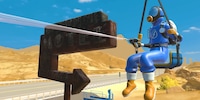
Background information
Powerwash Simulator and many more: why we like boring busywork in our games
by Rainer Etzweiler

Urban Games is Switzerland’s second-largest gaming studio. I paid it a visit to find out how a passion project went on to become one of Europe’s most successful transport simulators. And to hear why Transport Fever 3 hopes to be more than just a game for railway enthusiasts.
I’m travelling from Zurich to Schaffhausen on a double-decker commuter train. Its distinctive blue carriages have become very familiar to me since I started playing business simulator Transport Fever 2. Today, I’m heading to Urban Games, the studio behind that very same game series. Feeling excited to get a look behind the scenes, it strikes me that making the journey on a train that appears in the game couldn’t be a more fitting prelude to the visit.

The timing of my visit is ideal; Urban Games is currently working on Transport Fever 3, set to be released in 2026. As a fan of the series, I’m looking forward to the new game. Some details have already been made public, and a demo was showcased at this year’s Gamescom. However, since I haven’t yet had the pleasure of trying out the game, I’m stoked to hear some insights into it. Not to mention to see the studio, which, having grown rapidly over the past decade, is beginning to outgrow its niche.
My visit starts with a warm welcome from Management Assistant Cleopatra, who shows me around the hallowed halls of Urban Games. You really can’t miss the studio’s connection to railroads – there are model trains all over the place. It makes the two massive retro arcade machines at the back of the office look all the more out of place.
The developers are currently hard at work. With new game Transport Fever 3 having already completed its first closed beta test, the team are doing the finishing touches. When I sit down with Publishing Manager Nico, the game’s running on his screen. On a map of the new subarctic region, countless vehicles whizz around on roads and tracks.
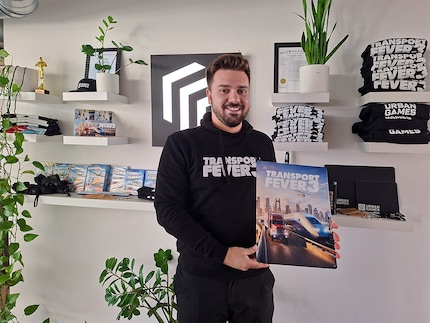
Before we get into the nitty-gritty of the game, I ask Nico for an exact release date. And I’m pleased with the answer, although he technically doesn’t give me one. «We can develop the game completely freely and independently, so we’ll release it right when it’s ready,» Nico says. This is good news for the gaming community. All too often, games have been brought to market in an unfinished state. While the studio worked alongside publisher Good Shepherd Entertainment on previous releases, Urban Games will be taking on the publishing work itself for Transport Fever 3.
Later, I get the chance to have a conversation about this with Basil Weber, the studio’s co-founder and Managing Director. He explains that Urban Games has always been able to finance its games independently. «Even so, not having to coordinate with anyone else is a huge advantage,» he says.
Basil happily points out that Urban Games has built up a stellar reputation among gamers, partly a result of years of free updates for published games. Its popularity is also evident when you look at Transport Fever 3’s strong representation on Steam Wishlists. Trust and a good reputation are the most important currencies for an independent studio – and the team is keen to live up to these high expectations.
Hundreds of thousands of people buy the game as soon as it’s released because they trust us.
Once Nico’s clarified this key point, I get my first look at the game on his computer. It’s the Gamescom version of Transport Fever 3, which also contains some newly implemented features. The studio’s fourth game is showing clear signs of the experience gained from previous games and the higher budget. It’s worlds apart from the team’s first game, Train Fever (2014).
Train Fever focused heavily on linear construction, a functional look and an informative overlay, mostly appealing to hardcore tycoon gamers. Subsequent games added campaigns, extensive mod support, new vehicle classes and significantly improved graphics with each game. Shoutout to the foamy waves, palm trees and white, sandy beaches in Transport Fever 2! Transport Fever 3 is now set to top this with day-to-night changes and weather effects.
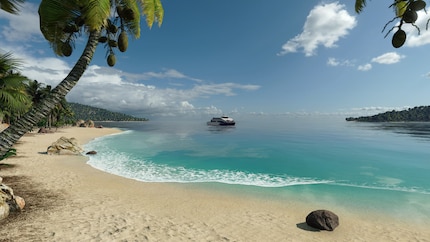
Nico proudly tells me that the development team added a complete atmosphere simulation just a few days ago. As a result, the game now has clouds and even rain. The raindrops look beautiful on the camera. Darkness and rain completely change the appearance of the map.
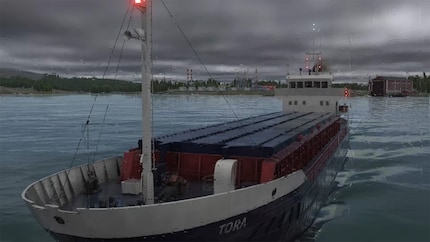
Although they have no influence over the gameplay, cosmetic effects such as night lights, storms and reflections on the surface of water are indicative of a trend. They’re in keeping with Transport Fever’s bid to break away from its image as an overly complex niche game. Ever since Transport Fever 2, the studio’s placed more emphasis on aesthetics. With the advent of Transport Fever 3, the game’s no longer a simulation with a purely functional look. Instead of rudimentary landscapes, there are now worlds worth exploring and developing. As a result, you get spectacular backdrops, for example when riding in the driver’s cab.

With its latest piece of work, Urban Games aims to make it easier for players lacking experience with the genre to get into Transport Fever. While the user interface used to overwhelm you with information, it’s now only supposed to show you the data you need. According to the studio, it’s also simplified route and vehicle management.
The idea is to make this game a bit more mainstream.
Appealing to a larger group of players and simplifying the mechanics sounds like a nice way of saying that the gameplay’s been softened. Something that’d have die-hard fans up in arms. When I put this to Nico, his response is reassuring: «The word ‘mainstream’ always sounds so negative, but it just means ‘more accessible’. Plus, we’ve built in a lot more mechanics in the background.» Urban Games has presented some of these mechanics in more detail in its First Look. Others, however, have yet to be revealed. Nico shows me everything in game,
assuring me that perfectionists like myself will be free to take on any challenge, optimising transportation routes down to the last millimetre. If this proves to be too much, you can skip the extra missions and enhancements without being hit with any major disadvantages. It’s a tricky balancing act for the game designers.
We don’t want to punish anyone.
The new cargo delivery deadline is a good example of this. In Transport Fever 3, you get a bonus if you deliver cargo within a product-specific time period. «The produce doesn’t go bad if you miss the deadline – and you’ll still be paid if the delivery’s delayed,» Nico says.
The delivery times are supposed to add a new incentive to the game. One focused on reward, not punishment; players who perfectly meet their requirements are rewarded with boosts to city growth and juicy profits. I’m excited to see how this’ll work in practice in the finished game.
Although it’s a business simulator, Transport Fever 3 is also attempting to reduce the importance of money as a motivating factor. Of course, having a healthy bank balance will still be important. However, in previous games, players with an abundance of cash had little incentive to continue playing.
We want to get away from money. In Transport Fever 2, you always reach a point where you have enough cash. After that, the game gets boring.
With this in mind, there’s been a push to inject more variety into Transport Fever 3. This includes the changing needs of city inhabitants, new missions, secondary commercial needs and two new vehicle classes (helicopters and freight trains). Oil platforms will make water transportation more important, while swamps and canyons will make it more difficult to reach remote places. Using the terraforming tool to raze disruptive landscape obstacles to the ground will cause resentment in cities and negatively impact their growth.

This has been made possible by Transport Fever 3’s new mechanic for city development. The map is divided into districts, which in turn are assigned to cities. Everything that happens in a district impacts its city, Nico explains. Traffic jams, pollution, terraforming and unhappy passengers stuck in traffic in the middle of the forest can inhibit a city’s growth.
There’s also a new level system. Reaching milestones unlocks new development levels – a tip of the hat to Cities: Skylines, a city-building simulator that only unlocks new buildings if you progress in the game. These include landmarks modelled on real life.
To demonstrate this, Nico shows me an «ancient Roman arena». If you place this unique building, it creates a construction site that you need to supply with materials and workers. I’m familiar with this setup from Anno 1800 and its monuments. Once the building’s been completed, it looks cool and generates bonuses for its city district to boot. It sounds brilliant.

Nico tells me the development team has also put a lot of thought into the campaign. They’re currently still working on this aspect of the game. By contrast, Train Fever didn’t have a campaign – and the one in the sequel wasn’t particularly memorable. Apparently, the new game will put this right. According to Nico, its eight campaign missions will initially serve as an intro to the game before becoming «gruelling» later on, posing a real challenge to players.
In years to come, I want you to be able to say you remember the campaign really well.
This led the Urban Games team to think about what else they could do around the theme of transportation. During the campaign, players will find content and challenges that don’t exist in the sandbox game. In addition, Nico promises everything will be fully soundtracked and enhanced with cutscenes. I can’t wait.
Alongside the campaign, the team has also been working on another much-criticised point: the traffic. Sooner or later, cars, buses and trucks always wear down the roads, causing gridlock. I’ve been wanting Urban Games to introduce new traffic management tools for ages, so I ask Nico if they’re on the cards. I don’t actually expect him to say yes, as there’s a line between Transport Fever and Cities: Skylines when it comes to road traffic, among other things.
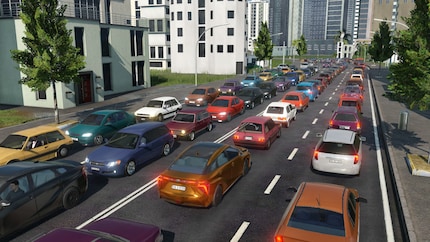
But lo and behold, Nico grins. «Of course they’re on the cards,» he says, pointing to a menu for better traffic management. Urban Games hasn’t officially made this public yet, so I can’t go into more detail about what I got to see. What I can tell you is that I suspect the new tools will give me a fair few late nights trying out traffic-enhancement measures.
We want to take a good product and make it outstanding.
Transport Fever 3’s trying to juggle multiple elements. It’s got to appeal to genre newcomers, but also appease professional optimisers and builders using the game as a virtual model railway. City planners have to feel just as at home playing it as railway buffs and virtual tycoons. Having tried out the game and put my questions to the team, I feel like this could all work out.
With previous releases, the team succeeded in widening its target audience. Over the past eleven years, Urban Games has grown from a three-man passion project to Switzerland’s second-largest game developer, with 25 employees. It’s a remarkable success story that begins in Basil’s teenage bedroom in the nineties. He was enthralled by Transport Tycoon, a Micropose simulation game released in 1994. Played in the isometric perspective, the game requires users to build a transportation company.
Ultimately, it determined the course of Basil’s life. Even back then, he knew he’d one day found a company «to make a game like that even cooler». He threw everything he could into achieving this goal, the result of which was Train Fever, a game Basil and his brother Urban spent years programming in their spare time.
The release of Train Fever changed everything.
Urban Games was founded in 2013, and the game came out in 2014. When I ask Basil if he’d anticipated the games would become so hugely successful, he says, «Oh, no», adding, «But Train Fever’s release went much better than we thought it would». It’s at this point that the brothers realised they might just be on their way to becoming successful game developers.
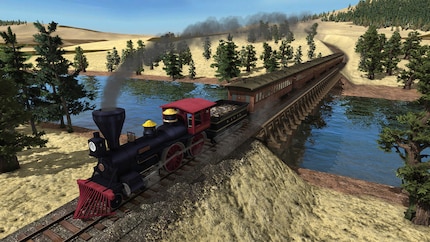
Basil explains that every game released in the wake of Train Fever exceeded financial expectations, laying a solid foundation for further sequels. Urban Games seems to be living by its own game mechanics. Through a mix of clever planning and continuous expansion, a small three-man company has become one of the biggest players on the Swiss gaming scene.
So, what does the future hold? «There’s a lot more to come, including cable cars,» Basil says straight off the bat, before waving off the comment with a laugh. In reality, there aren’t any cable cars planned for Transport Fever 3. But who knows what might appear in the future? For now, everybody’s watching out for a successful release of the fourth game.
Feels just as comfortable in front of a gaming PC as she does in a hammock in the garden. Likes the Roman Empire, container ships and science fiction books. Focuses mostly on unearthing news stories about IT and smart products.
Interesting facts about products, behind-the-scenes looks at manufacturers and deep-dives on interesting people.
Show all
Background information
by Rainer Etzweiler

Background information
by Domagoj Belancic
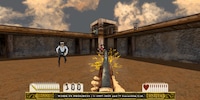
Background information
by Philipp Rüegg